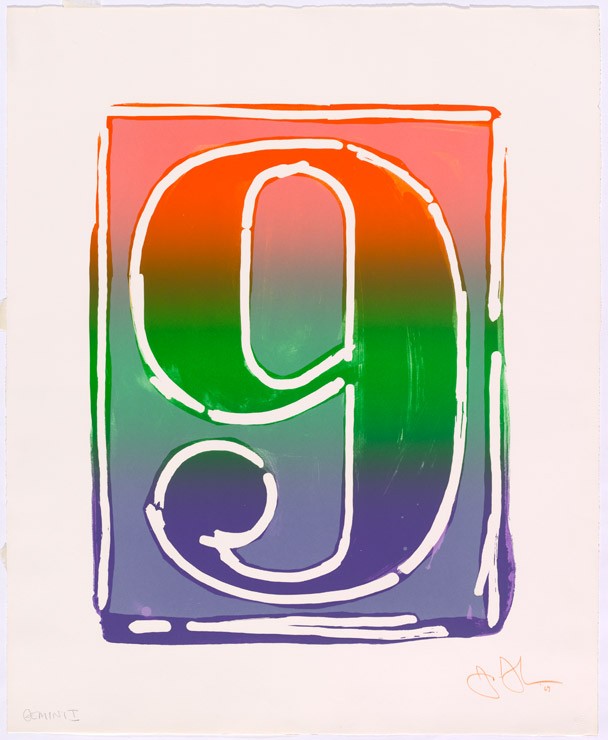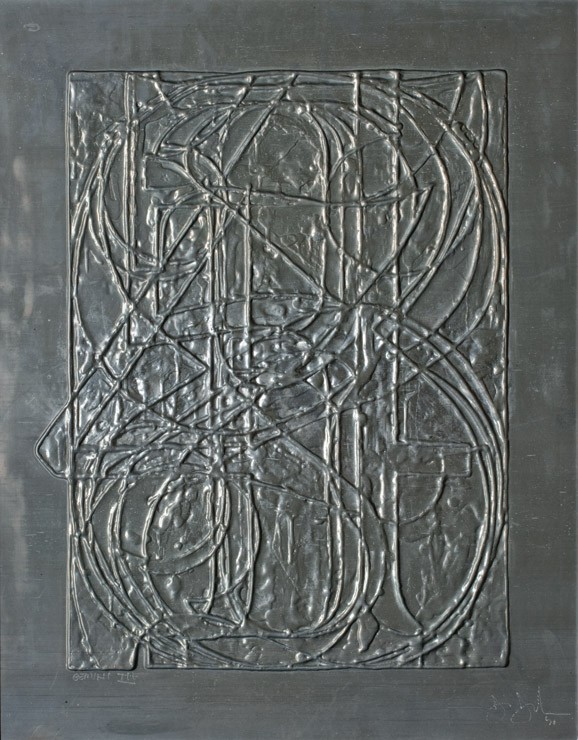Since the mid-1950s, Jasper Johns (American, born 1930) has reworked key motifs—flags, targets, maps, the alphabet, and numbers—in a serial fashion, exploring the impact of changes in color, scale, sequence, and medium. Johns favors subjects that “the mind already knows” but overlooks due to constant exposure. Counteracting over-familiarity, each of the Color Numerals prints elevates a number, its form derived from a commercial stencil, to a striking, rainbow-hued portrait. This is wittily underscored by the Mona Lisa (printed in reverse) in Figure 7, a pun on the multiple definitions of “figure.”
The meaning of any series is to be found not just in its individual parts, but also in the spaces between them. Seen in sequence, each print functions as a point on a continuum, with color transitioning from primary colors (red, yellow, and blue) in Figure 0 to secondary colors (orange, green, and purple) in Figure 9. This succession is color-coded by Johns’s signatures, which match the topmost hue in each print. While Johns’s numerical sequence could in theory extend indefinitely, Color Numerals demarcates a terminal arithmetic progression, its finality reinforced by the heavy white outline of Figure 9.














